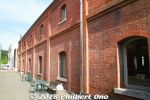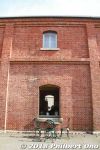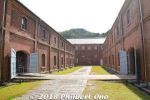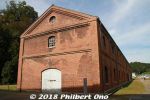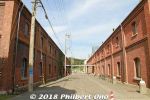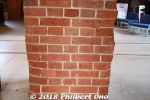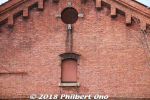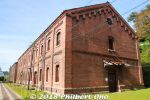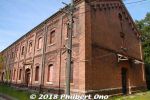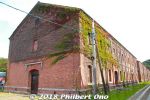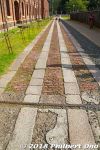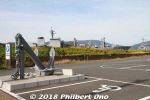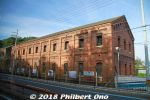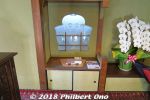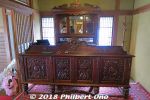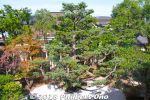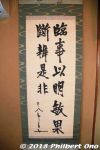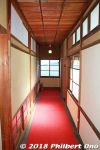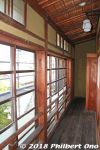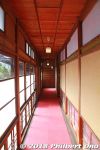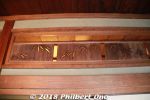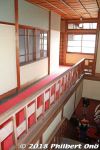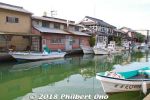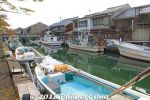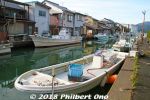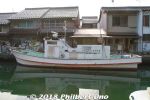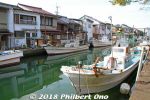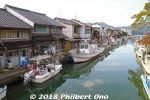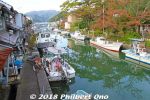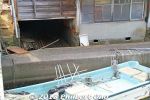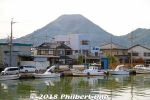 Image search results - "Maizuru" Image search results - "Maizuru" |
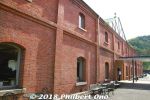
Opened in 2012, Maizuru Brick Park is a complex of 12 large brick buildings near the Japanese navy base. They were built from 1901 until the 1920s to store munitions (arsenal) for the Imperial Japanese Navy. Eight of the buildings are National Important Cultural Properties and a few of them have been renovated and opened to the public. This is the first building you enter, the Maizuru World Brick Museum (赤れんが博物館).
Hours 9:00 am–5:00 pm, closed Dec. 29–Jan. 1. 15-min. walk from JR Higashi-Maizuru Station (JR Maizuru Line and Obama Line). Parking available.
Map: https://goo.gl/maps/ZuFd1eXrNds
|
|
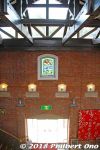
Inside the huge Maizuru World Brick Museum.
|
|
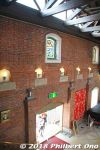
Very high brick wall.
|
|
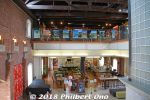
Inside the huge Maizuru World Brick Museum. It was used to store torpedoes made by munitions factories in Maizuru. Restaurant on the groundfloor, museum on the upper level.
|
|
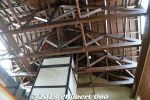
Ceiling of the huge Maizuru World Brick Museum.
|
|
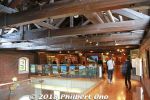
The museum is on the upper level.
|
|
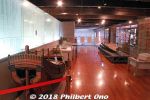
Maizuru World Brick Museum on the upper floor. Exhibits local historical artifacts. There's no English though.
|
|

Ancient dugout canoe found in Maizuru.
|
|
|
|
|
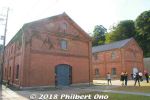
These brick buildings are not open to the public.Maizuru Brick Park, Kyoto Prefecture.
|
|
|
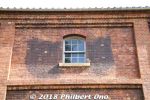
During World War II, the brick buildings were painted black to make them less noticeable. The black paint still remains here and there. Amazing that these buildings have survived. Maizuru's weapons factories and navy base got heavily bombed by American planes in July 1945, but not this arsenal.
|
|
|
|
|
|
|
|

Inside Brick Building No. 5 (赤れんが5号棟), the park's largest building. Built in 1918 to store torpedoes, depth charges, and mines. After the war, it was used by a warehouse company.Now used as an event hall and cafe space (cafe open only on weekends). It can be rented to hold exhibitions or events (concerts, weddings, etc.). It has been reinforced with these steel girders for earthquake resistance. National Important Cultural Property.
|
|
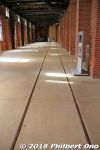
Brick Building No. 5 had rails.
|
|
|
|
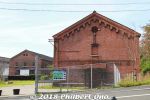
This part of the park had buildings owned by the Japanese government. Not open to the public.
|
|
|
|
|
|
|
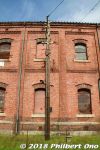
The brick park has been used as a backdrop in Japanese movies.
|
|
|
|
|
|
|
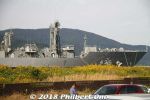
Maizuru Brick Park is right next to the Japan Maritime Self-Defense Force's Maizuru navy base.
|
|
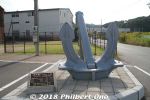
Old anchor for the Shirane destroyer that was retired in 2015.https://en.wikipedia.org/wiki/JDS_Shirane
|
|
|

Japan Maritime Self-Defense Force's Maizuru navy base (舞鶴基地) where the Hyuga helicopter carrier, Aegis ship, and other navy ships are based.This base is in charge of maritime security along the Sea of Japan's coast from Yamaguchi to Aomori Prefectures.
|
|
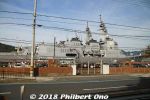
This is the Atago, a guided missile destroyer.
|
|
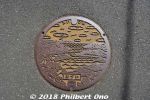
Maizuru manhole shows Maizuru Bay in northern Kyoto Prefecture.
|
|
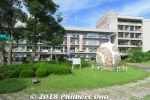
Maizuru City Hall is next to Maizuru Brick Park.
|
|

How to promote crab.
|
|
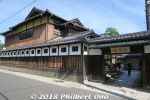
Shoeikan was originally the annex (別館) of the Shoeikan ryokan inn opened in 1904 (Meiji 37). The inn was built for navy VIPs like Admiral Heihachiro Togo who led the Japanese navy during the Russo-Japanese War.Hours
Lunch: 11:30–14:30 Dinner: 17:30–21:30
About 1 km from JR Higashi Maizuru Station. Parking available.
Map: https://goo.gl/maps/sQd8ZdekJqA2
|
|
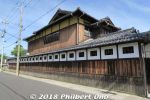
The ryokan's annex building was left unused and decrepit for many years and was on the verge of being torn down until a citizens group got together to clean, renovate, and preserve the building. They finally decided to make it a Western-style restaurant serving navy cuisine. It just opened on Oct. 11, 2018. Glad that they preserved the building.
|
|
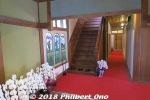
Shoeikan entrance hall.
|
|
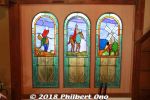
Entrance hall stained glass.
|
|
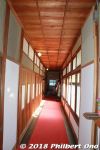
Shoeikan corridor to the restaurant.
|
|
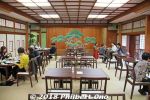
The 1st floor is the main dining room. It even has a Noh stage.
|
|
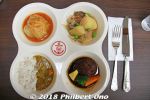
We had a special sample of the curry rice, cabbage roll, stewed hamburger, and potatoes and meat (niku-jaga). Curry rice is famous as a navy dish in Japan.Shoeikan restaurant, Maizuru, Kyoto Prefecture.
|
|

The restaurant's menu is quite cheap, prices ranging from ¥900 for Navy curry rice to ¥4,500 for a full course.
|
|
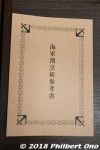
For the restaurant menu and recipes, the restaurant chefs use an old navy recipe book that was used by navy galley staff in the Imperial Japanese Navy. It has about 200 recipes for Western dishes and confections.
|
|
|
|
|
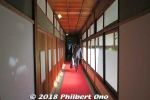
We could also go upstairs and tour the private dining rooms.
|
|
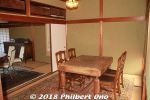
Private dining room.
|
|
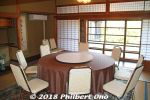
Private dining room.
|
|
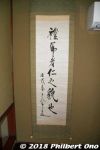
The 2nd floor's private dining rooms are adorned with calligraphy by legendary Admiral Heihachiro Togo.
|
|
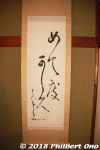
Calligraphy by legendary Admiral Heihachiro Togo.
|
|
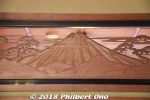
The private dining rooms are quite ornate with carved transoms like this one of Mt. Fuji.
|
|
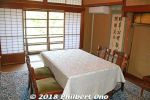
Private dining room.
|
|
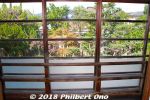
Garden view from a private dining room.
|
|
|
|
|
|
|
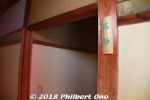
Private dining room named "Takasago."
|
|
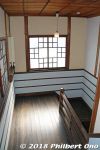
Stairway.
|
|
|
|
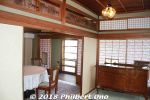
Private dining room.
|
|
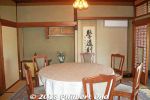
Private dining room at Shoeikan.
|
|
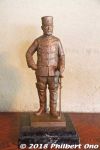
Small statue of Admiral Heihachiro Togo in a private dining room.
|
|
|
|
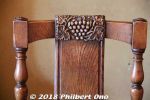
Seat back.
|
|
|
|
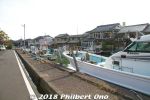
Yoshihara Inlet is a picturesque waterfront fishing neighborhood with boats moored right outside. Fishing village since the Edo Period. Located on the north end of Isazu River (伊佐津川). "Yoshihara" means reed fields, so this area used to have reed beds on marshy land. About 20-min. walk from JR Nishi-Maizuru Station (JR Maizuru Line). Map here
|
|
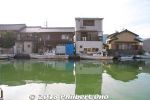
The homes used to have built-in boat garages like at Ine, but they were abolished and the boats are moored right in front instead.
|
|
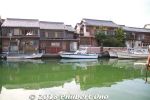
You can just walk along the inlet (be careful not to trip over the boat lines and ropes).
|
|
|
|
|
|
|
|
|
|
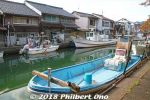
Yoshihara Inlet
|
|
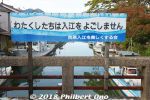
Walk until this bridge going over the inlet. Banner says, "We won't pollute the inlet."
|
|
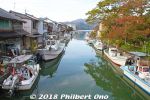
Get some good shots of the inlet from the bridge.
|
|
|
|
|
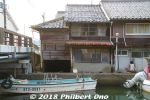
Here's one house that used to have a boat garage connected to the water.
|
|
|
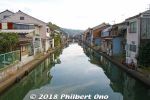
Beyond the bridge, the inlet has no boats.
|
|

This is the road behind the homes along the inlet.
|
|
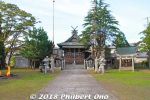
Next to the bridge is this local Shinto shrine named Minazuki Jinja dedicated to Tsukuyomi (月夜見命), the Moon deity and younger brother of Sun Goddess Amaterasu. 水無月神社
|
|
|
|
|








